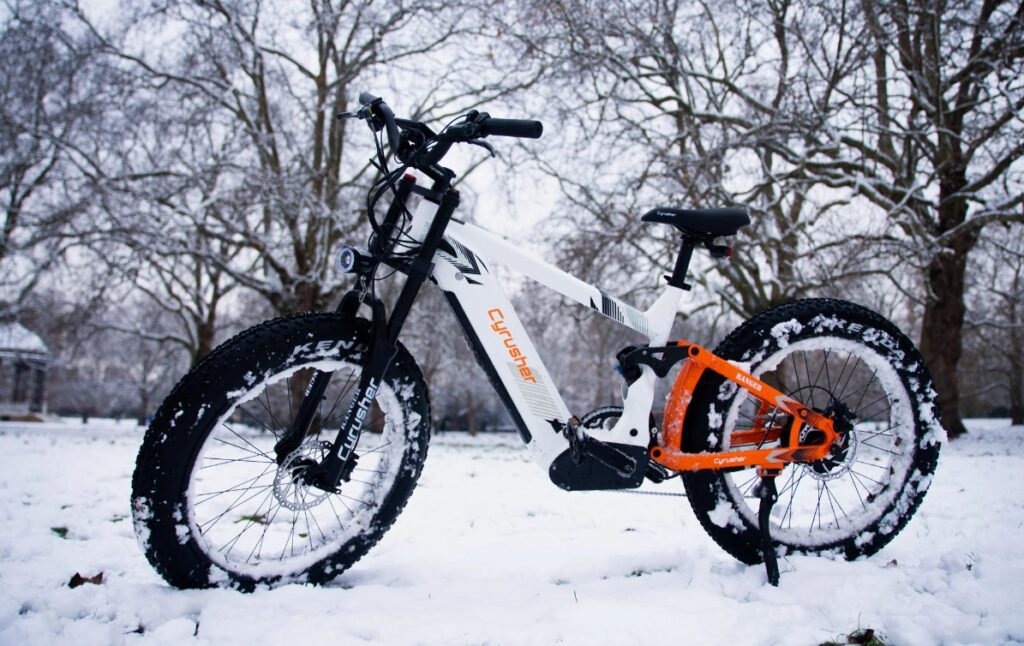How To Keep E Bike Battery Warm In Winter? Explained
Are you looking for How To Keep E Bike Battery Warm In Winter? Navigating the chill of winter on your e-bike requires special attention to your battery, the heart of your ride. As temperatures drop, so does the efficiency of your e-bike battery, posing challenges to enthusiasts keen on maintaining optimal performance. This guide embarks on a journey to explore effective strategies for keeping your e-bike battery warm, ensuring a smooth and reliable riding experience even in the coldest months.
Key Takeaways
- Insulate your battery to maintain optimal performance in cold weather.
- Store your e-bike and its battery in a warm, dry place when not in use.
- Use a battery cover or wrap for extra protection during rides.
- Avoid charging your battery in extremely cold temperatures.
- Regular maintenance checks are crucial for winter e-bike care.
How To Keep E Bike Battery Warm In Winter?
To keep your e-bike battery warm in winter, insulate it with a specialized battery cover, store it in a warm place when not in use, and avoid charging it in extremely cold temperatures. Regular maintenance and careful use can also significantly enhance battery warmth and efficiency during cold weather.

Maintaining Optimal Battery Performance in Cold Weather
Insulating Your E-Bike Battery
Insulating your e-bike battery is a straightforward yet effective method to keep it warm. Using a battery cover or sleeve made from insulating materials can help retain heat, ensuring the battery operates efficiently. These covers not only protect against the cold but also shield the battery from the elements, which is particularly beneficial during snowy or rainy rides.
In addition to using a cover, storing your battery in a warm environment whenever possible can prevent it from getting too cold. If you’re storing your e-bike in a garage or shed, consider removing the battery and keeping it inside your home in cooler months. This simple step can make a significant difference in your battery’s performance and longevity.
Strategies for Battery Use and Storage
Properly managing your e-bike battery during winter doesn’t stop at insulation. The way you charge, store, and care for your battery can all impact its warmth and overall health. Charging the battery indoors where it’s warm ensures it starts at an optimal temperature before you head out.
Additionally, try to avoid leaving your e-bike in the cold for extended periods. If you must, keep the battery insulated, and consider using a portable heater or warm packs to maintain temperature during breaks in your ride.
Regular maintenance checks are also vital. Cold weather can exacerbate existing issues, so ensuring your battery is in top condition before winter sets in is crucial. Check the battery’s connections and ensure its software is up to date to prevent any cold-weather malfunctions.
Enhancing E-Bike Battery Life and Efficiency in Winter
Utilizing Battery Warmers and Portable Heaters
For those looking for an extra level of protection, battery warmers, and portable heaters can provide targeted warmth, keeping your e-bike’s battery at an ideal operating temperature even on the coldest days. These devices are designed to gently warm the battery, avoiding the risk of damage that can come from rapid temperature changes.
It’s important to use these tools correctly, following manufacturer instructions to avoid overheating or damaging the battery. While not necessary for every rider, they can be a valuable investment for those who frequently ride in very cold climates.
Riding Strategies to Maximize Battery Warmth
Altering your riding habits can also play a role in keeping your battery warm. One strategy is to start your ride with a short, high-intensity burst to generate internal battery heat. This method can help increase the temperature of the battery from the inside out, improving its efficiency even before you’ve covered much distance.
Moreover, planning your route to avoid prolonged exposure to icy conditions and taking regular breaks to check on your battery’s temperature can also help. During these breaks, if you’re using a portable heater or warm packs, it’s an excellent time to apply them.
How Cold Is Too Cold For E-bike Battery?
The performance of e-bike batteries, which are typically lithium-ion, starts to degrade at temperatures below freezing (0°C or 32°F). However, serious and permanent damage is unlikely unless the battery is exposed to extremely cold temperatures well below -20°C (-4°F) for extended periods.

At temperatures below freezing, you may notice a significant reduction in range and efficiency due to the slowed chemical reactions within the battery cells. It’s crucial to understand that while the battery can operate in cold conditions, prolonged exposure to extreme cold can reduce its lifespan and performance over time.
To ensure the longevity and efficiency of your e-bike battery, it’s advisable to avoid using or charging it in temperatures below 0°C (32°F) and certainly not under -20°C (-4°F). Always refer to your battery’s user manual for specific temperature recommendations as they can vary between manufacturers.
How Do I Keep My E-bike Battery Cool?
Keeping your e-bike battery cool, especially in hot weather, is essential for maintaining its health and prolonging its lifespan. Overheating can lead to reduced battery efficiency and capacity over time.
To avoid this, park your e-bike in shaded areas and avoid direct sunlight for extended periods. If possible, remove the battery when the e-bike is not in use and store it in a cooler, indoor environment.

Using a battery cover with heat-reflective materials can also help keep the battery cooler in hot conditions. Additionally, avoid charging the battery immediately after a ride when it’s still hot.
Allow it to cool down to room temperature to prevent heat build-up during charging. Consistent monitoring of the battery temperature through the e-bike’s display (if available) or touch can also aid in managing and preventing overheating.
How To Protect The Battery Of An E-bike In Winter?
Protecting your e-bike battery in winter involves several key practices to ensure it remains efficient and safe to use. Firstly, insulation is crucial; use a battery cover or insulation wrap designed for e-bike batteries to keep it warm during rides. These covers help retain heat, minimizing the impact of cold temperatures on battery performance.
Secondly, avoid storing your e-bike and its battery in extremely cold environments. If possible, remove the battery and store it indoors in a temperature-controlled setting. This practice helps prevent the battery from reaching temperatures that could dramatically decrease its performance and longevity.
Charging the battery at room temperature is another important consideration. Allow the battery to warm up to indoor temperatures before charging it, especially if it has been in a cold environment. This can help maintain its optimal chemical balance and efficiency.
Finally, regular maintenance checks during winter months can help identify any potential issues early on. Keeping the battery clean and dry, ensuring all connections are secure, and checking for software updates (if applicable) can contribute to its overall health and performance in cold conditions.
Conclusion
As the mercury dips, the care we extend towards our e-bike batteries must rise. Embracing insulation techniques, mindful storage, and proper charging practices are paramount in preserving battery life and performance through winter’s rigor. By following the outlined strategies, riders can ensure their e-bike batteries remain warm and efficient, transcending the challenges posed by cold weather and unlocking the joy of winter riding.
People Also Ask
Does riding style affect battery temperature in winter?
Yes, your riding style can impact battery temperature. Starting your ride with a short, high-intensity burst can help generate internal heat in the battery. Additionally, maintaining a steady pace rather than frequent stops and starts can help keep the battery warmer by ensuring consistent electrical discharge.
How does insulating material help in keeping the battery warm?
Insulating materials help retain the heat that the battery generates during operation, preventing it from being lost to the surrounding cold air. This helps maintain the battery’s internal temperature, ensuring it operates efficiently despite the cold external conditions.
Can I leave my e-bike battery on the charger overnight in winter?
While most modern e-bike batteries and chargers have safety features to prevent overcharging, it’s generally not recommended to leave batteries charging unattended for extended periods, especially in extreme temperatures. To extend battery life, charge it in a controlled environment and disconnect once fully charged.
What should I do if my e-bike battery gets too cold?
If your e-bike battery becomes too cold, the best action is to gradually warm it up to room temperature before using or charging it. You can do this by storing it in a warmer indoor environment. Avoid exposing it to rapid temperature changes, which could damage the battery.

Welcome to the exhilarating world of Matt Rex, a professional car racer turned renowned vehicle enthusiast. Immerse yourself in his captivating blog as he shares heart-pounding adventures, expert reviews, and valuable insights on cars, trucks, jets, and more. Fuel your passion for speed and discover the beauty of vehicles through Matt’s engaging stories and meticulous expertise. Join the ever-growing community of enthusiasts who find inspiration and expert advice in Matt Rex’s blog—a digital hub where the thrill of speed meets the pursuit of knowledge.







